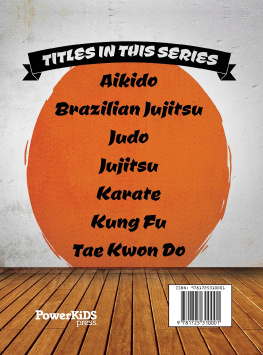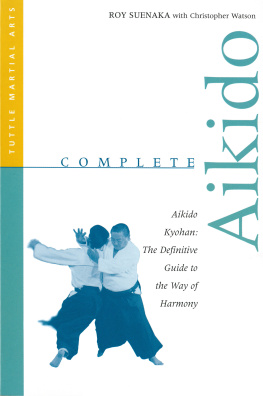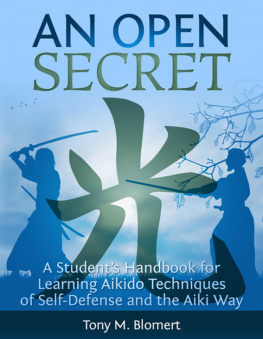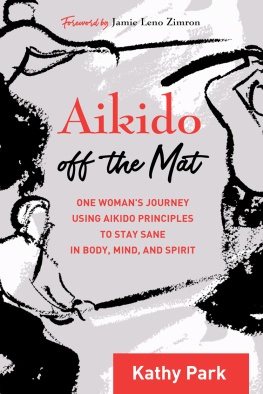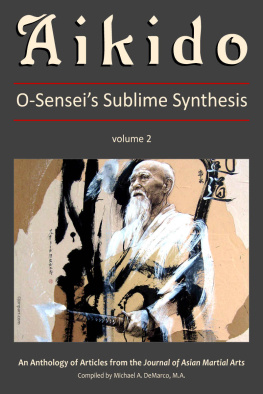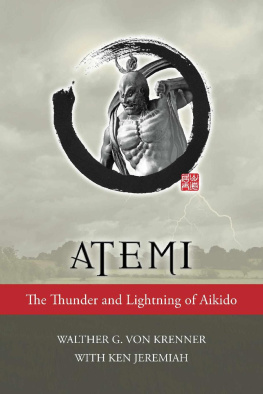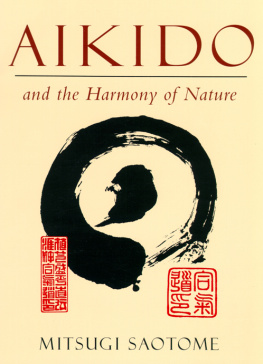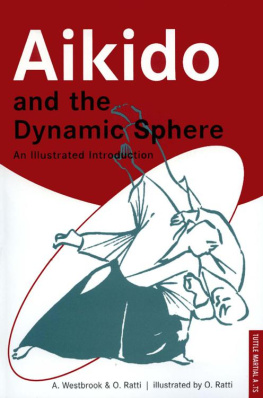Translation copyright 2004 by Dennis Clark. All rights reserved. No portion of this book, except for brief review, may be reproduced, stored in a retrieval system, or transmitted in any form or by any meanselectronic, mechanical, photocopying, recording, or otherwisewithout the written permission of the publisher. For information contact Blue Snake Books c/o North Atlantic Books.
Published by Blue Snake Books, an imprint of
North Atlantic Books
P.O. Box 12327
Berkeley, California 94712
Cover design by Susan Quasha
Enlightenment through Aikido is sponsored by the Society for the Study of Native Arts and Sciences, a nonprofit educational corporation whose goals are to develop an educational and cross-cultural perspective linking various scientific, social, and artistic fields; to nurture a holistic view of arts, sciences, humanities, and healing; and to publish and distribute literature on the relationship of mind, body, and nature.
North Atlantic Books publications are available through most bookstores. For further information, call 800-733-3000 or visit our websites at www.northatlanticbooks.com and www.bluesnakebooks.com.
eISBN: 978-1-58394-531-5
Library of Congress Cataloging-in-Publication Data
Sunadomari, Kansh, 1923
Enlightenment through aikido / by Kansh Sunadomari; translation by Dennis Clark.
p. cm.
1. AikidoPsychological aspects. I. Title.
GV1114.35.S86 2004
796.8154dc22
2004000100
v3.1
Contents



The Founder of Aikido, Morihei Ueshiba.

The original Japanese version of these words was brushed by Aiki Manseido Dojo benefactor and calligrapher, Mr. Yoshito Nakashima. It hangs on the wall of the Aiki Manseido Hombu Dojo.
The Spirit of Aiki Manseido
Aiki is love. It is the path that brings our hearts into oneness with the spirit of the universe to complete our mission in life by instilling in us a love and reverence for all of nature.
Aiki overcomes self. It not only takes hostility from our hearts but by transforming those who appear as enemies into enemies no more, it leads to absolute perfection of self.
This martial art, therefore, is the supreme way and call to unite our body and spirit under the laws of the universe.
banyuaigo no daiseishin: These are words that the Founder frequently used in describing the heart and spirit of Aikido. This translates as a spirit of love and reverence for all of nature or a spirit of loving protection for all things.
*Ten-chi literally translates as heaven and earth but also can mean universe.

The Founder and the author standing at the front gate of the old Ueshiba Dojo in Tokyo in 1956.


The Founder in prayer at Terayama Park in Kagoshima in October of 1963. Behind him is the author.

The Founder during a visit to Mt. Aso in Kumamoto in 1961.

The Founder teaching in the Manseikan Honbu Dojo in October of 1963.

The author explaining kokyu ryoku or breath power at the monthly yudansha training session. Once a month, these training sessions are held at Honbu dojo. Here each participant is given multiple opportunities to feel the authors technique and experience kokyu ryoku directly.
Translators Note

This is the first of Kansh Sunadomaris books to be published in English. The material in this book is taken from writings by Sunadomari-Sensei that appeared in his dojo newsletter between 1992 and 2001; they were later published in a book in Japanese entitled Aikido de Satoru. The reader should note that deletions, additions, and minor revisions have been made to facilitate translation into English. Furthermore, the differences between Japanese and English are significant, and nuances of meaning tend to get lost in the process of translation. Anyone seeking to objectively study and truly understand the words of the Founder of Aikido (Morihei Ueshiba) or Sunadomari-Sensei (or any other Japanese writer, for that matter) would ideally read their works in the original. However, not everyone can go through the time-consuming process of learning Japanese. That being said, even a perfect grasp of Japanese or a perfectly accurate translation would not ensure a full understanding of Aiki Manseido Aikido. Aiki Manseido, being a way harmoniously encompassing both spiritual and physical components, cannot be truly understood through words alone, however precise.
Over the past few years, I have had the great fortune to feel Sunadomari-Senseis technique firsthand on many occasions. It is quite a bewildering experience. Grabbing the wrists of an eighty-year-old man almost half your size and instantaneously having all of your strength sapped softly and your balance taken effortlessly is both perplexing and humbling. Moreover, it has forced me to reconsider the assumed superiority of youth, physical strength, and reason, opening my eyes to the vast potential of spirit and mind.
It is my sincere hope that this translation accurately portrays the authors message and remains true to the legacy of the Founder of Aikido, Morihei Ueshiba.
Finally, I would like to express my sincere gratitude to Honbu Dojo shihan Katsuro Sato for his help, support, and explanations; Reverend Andrew Ellis for his encouragement and help; Samuel Lapalme-Remis for his assistance in editing and translating some sections of the book; and, of course, Sunadomari-Sensei for his instruction and guidance.
D ENNIS C LARK
Foreword

It is a great honor to have been asked by Kansh Sunadomari to write an introduction to this English translation of Enlightenment through Aikido.
I first encountered Aiki Manseido, which was then called Manseikan Aikido, in 1975 when I was in my mid forties seeking something to keep in shape. I enjoyed the experience so much that I felt I had wasted twenty years by not joining in 1953, the year Sunadomari-Sensei began teaching in Kumamoto.


